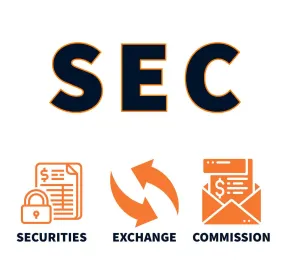On February 9, 2023, the U.S. Securities and Exchange Commission (the “SEC”) charged Kraken with offering and selling Kraken’s Staking Program – its staking-as-a-service product – as an unregistered security. Kraken, more formally known as Payward Ventures Inc. and Payward Trading Ltd is among the more significant and reputable crypto trading platforms in the United States. To settle these charges, Kraken has agreed to immediately and permanently cease offering or selling securities through any crypto asset staking services or staking programs as well as to pay $30 million in disgorgement, prejudgment interest, and civil penalties.
Numerous blockchains, including Ethereum and Solana, operate their consensus mechanisms at least in part based on something called “proof of stake.” This differs from the original blockchain of the Bitcoin protocol, which generates rewards by obtaining a consensus to validate transactions based on a complicated math problem called “proof of work.” In contrast, proof of stake generates rewards by requiring validators to lock up a certain amount of their crypto tokens for a period of time.
Usually, staking is not available to the average retail cryptocurrency customer, and more lucrative results are obtained when crypto is staked in larger quantities. One reason is that typically, a minimum number of tokens is required to be staked to become a validator eligible for rewards. Also, the more that is staked, the greater the chance of rewards for properly validating new blocks on the chain. Further, staked amounts may be at risk of ‘slashing’ if the validator fails to validate transactions properly. Many chains also charge transaction fees at the start of or during staking to incentivize longer staking periods and higher staking amounts. They often include on-ramps and off-ramps known as ‘bonding’ during which such crypto is not actually staked but also unable to otherwise be used. These impediments have led many service providers to launch staking-as-a-service platforms, such as the Staking Program, to allow individual retail customers to benefit from the rewards of staking.
The SEC specifically noted several ways the Staking Program differed from how staking would work should a proof-of-stake cryptocurrency holder itself stake its crypto, making it more closely resemble an investment product than a tech platform.
-
Rather than using the staking payouts determined by the proof-of-stake protocols, Kraken itself determined the amount that would be paid out for staking crypto through the Staking Program. These returns did not necessarily correlate with the amount that Kraken actually earned by staking the customer’s crypto, and Kraken was able to keep any positive differential between advertised returns and actual staking returns.
-
Payouts of rewards were to occur continuously – generally once or twice a week – rather than on a variable basis dependent on when staking rewards are earned.
-
Unlike staked crypto, which cannot be withdrawn while staked and is often subject to lengthy ‘bonding’ and ‘unbonding’ periods before and after the crypto is staked, crypto assets locked into the Staking Program was able to be withdrawn at any time.
-
A portion of crypto provided by customers to the Staking Program was not actually staked at all and instead maintained as a “liquidity reserve” to permit the withdrawal of assets from the Staking Program.
-
Staking was not subject to transaction and deposit fees imposed by many staking protocols and was not subject to any minimum amount as is typical across staking protocols.
-
Kraken’s platform, which included cybersecurity and proof of reserves, allowed users to stake in a way that would not have been possible had customers directly staked crypto assets themselves.
These distinctions help show that the Rewards Program was clearly a different product than direct staking itself. According to the SEC’s allegations, these distinctions show that the Staking Program met each of the prongs of the test outlined in SEC v. W.J. Howey Co., 328 U.S. 293, 299 (1946), making the Staking Program an investment contract that is a security. Under Howey, an investment contract is a security if it involves an investment of money into a common enterprise with a reasonable expectation of profits or returns derived from the entrepreneurial or managerial efforts of others. Of note, Kraken allegedly touted the Staking Program as an investment opportunity, using words like “earn” and “returns” in its marketing materials, and the Staking Program indeed generated well over a hundred million dollars in investment returns. The CEO of Kraken himself conceded that “some product/marketing/ToS differences might make a different decision” on whether to challenge the SEC’s allegations.
The SEC complaint never alleges that staking itself is an offer or sale of securities. It is also questionable whether other staking-as-a-service models might not be securities. For instance, it is unclear if the result may have been different if, rather than offering a product where Kraken set different terms than the staking protocols, Kraken had merely facilitated the aggregation of customer crypto to stake that crypto on their behalf directly.
The SEC complaint also makes a novel argument that could have wider-range implications in the DeFi space. In a seemingly out-of-place allegation, the SEC claims that Kraken’s managerial efforts of others included “[p]roviding a user-friendly, one-stop-shop investor interface” and “simplifying a complex staking process with an easy-to-use interface in a secure and trustworthy environment operated by technical experts.” In addition to raising the question as to why the SEC is focusing on activities that it does not deny lowers risk, this raises the question of whether the SEC might take the position that merely providing a user interface that provides access to a blockchain-based protocol could be either an investment contract or evidence of sufficient ‘efforts of others’ to meet that prong of the Howey test. Such a position would seem at odds with the SEC’s long-standing position that it is technology-neutral and seeks to govern securities rather than tech platforms.
Also of note was the relatively high amount of the penalty that Kraken agreed to pay in respect of the Staking Program. While investors had staked over $2.7 billion through the Staking Program and earned nearly $150 million in total rewards, Kraken’s reported net income attributable to U.S. investors was just under $15 million. This means the penalty being paid by Kraken is slightly more than double its profits from engaging with the Staking Program with U.S. persons.





 />i
/>i

